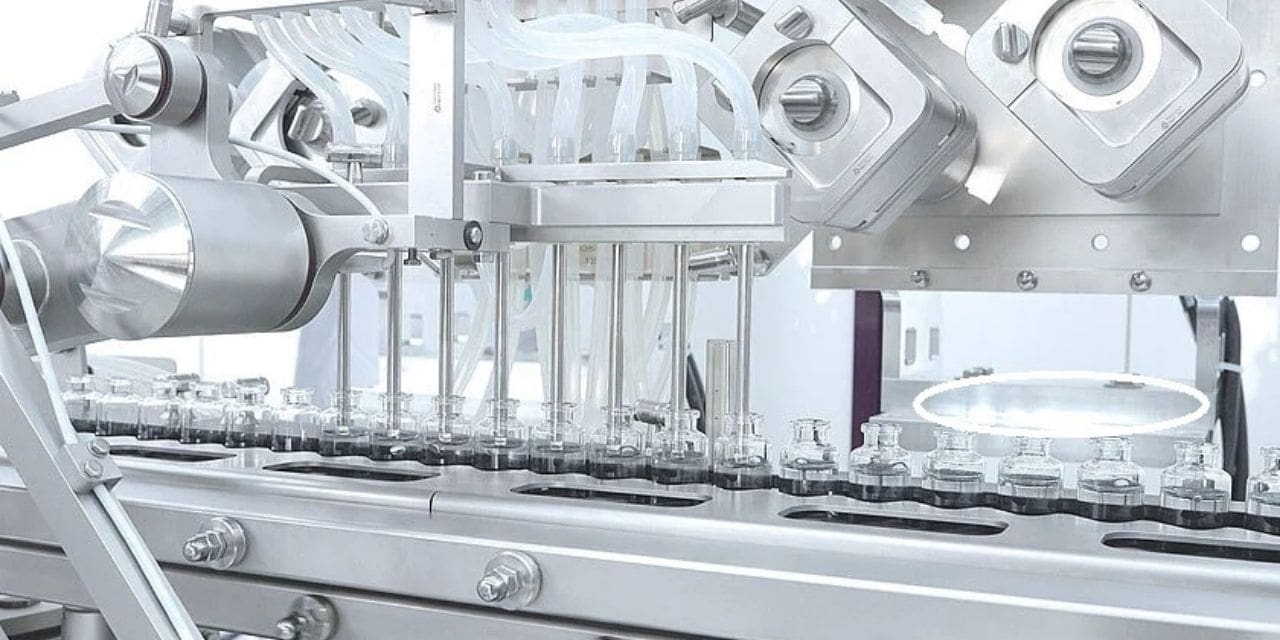The global robotic vial washing and filling machines market has experienced remarkable growth, driven by the increasing adoption of automation in the pharmaceutical and biotechnology sectors. Valued at US$ 530.6 Mn in 2023, the market is projected to expand at a compound annual growth rate (CAGR) of 4.1% from 2024 to 2034, surpassing US$ 816.6 Mn by the end of the forecast period. The robust growth trajectory reflects the growing demand for efficient, precise, and sterile solutions in pharmaceutical manufacturing processes.
Analysts’ Viewpoint on Market Growth
The rise in demand for automation and precision in pharmaceutical manufacturing has significantly propelled the adoption of robotic vial washing and filling machines. These systems streamline critical processes, such as washing, sterilizing, and filling vials, ensuring product quality, minimizing human error, and enhancing operational efficiency. Their ability to handle sensitive materials, such as vaccines and biologics, with unparalleled accuracy makes them indispensable in the pharmaceutical and biotechnology industries.
Key players in the market are increasingly integrating advanced technologies, such as artificial intelligence (AI) and machine learning (ML), into robotic systems. These advancements have enabled real-time monitoring, predictive maintenance, and improved cleaning protocols to ensure sterility during production. This emphasis on technological innovation is expected to remain a major driver for market growth, addressing the stringent quality standards and regulatory requirements in the pharmaceutical sector.
Market Introduction
Robotic vial washing and filling machines are sophisticated systems designed to automate the cleaning, sterilizing, and filling of vials with liquid medications or other pharmaceutical substances. By maintaining high precision and sterility, these machines reduce contamination risks and optimize production efficiency. They are widely utilized in the production of vaccines, biologics, and other sensitive pharmaceutical products, where strict compliance with hygiene and quality standards is crucial.
Regional Insights
- North America: The North American market is a significant contributor to global revenue, driven by the presence of advanced pharmaceutical manufacturing facilities and increased investments in automation. The U.S., in particular, is a leading market due to its robust regulatory framework and emphasis on maintaining high-quality standards in drug production.
- Europe: Europe is another prominent region, characterized by the strong presence of pharmaceutical giants and stringent regulatory requirements for drug manufacturing. Countries such as Germany, Switzerland, and the U.K. are key contributors to regional growth, supported by advancements in automation technologies.
- Asia Pacific: The Asia Pacific region is expected to witness the fastest growth during the forecast period. The rapid expansion of the pharmaceutical industry, coupled with increasing investments in automation and infrastructure development in countries such as China and India, is driving market growth.
- Latin America: Steady growth in Latin America is attributed to the rising demand for high-quality pharmaceutical products and increased adoption of automation technologies. Brazil and Mexico are leading markets in the region.
- Middle East & Africa: The Middle East & Africa region is gradually adopting robotic vial washing and filling machines, supported by growing healthcare investments and the establishment of pharmaceutical manufacturing facilities.
Market Drivers
- Increased Demand for Automation: The growing need for efficiency, precision, and sterility in pharmaceutical manufacturing has fueled the demand for robotic systems.
- Focus on Reducing Human Error: Automation minimizes the risks associated with manual handling, ensuring consistent product quality.
- Stringent Regulatory Requirements: Compliance with strict pharmaceutical standards necessitates the use of advanced systems capable of meeting sterility and hygiene protocols.
- Rising Production of Vaccines and Biologics: The increasing focus on vaccines and biologics production drives the demand for high-precision vial washing and filling machines.
Key Technological Advancements
- Integration of AI and ML: Advanced robotic systems equipped with AI and ML enhance operational efficiency, allowing real-time monitoring and predictive maintenance.
- Improved Cleaning Protocols: Enhanced cleaning mechanisms ensure sterility and reduce contamination risks.
- Customizable Solutions: Manufacturers are offering tailored systems to meet specific client requirements, catering to diverse pharmaceutical processes.
Future Outlook
The robotic vial washing and filling machines market is poised for sustained growth, driven by continuous advancements in technology and the expanding pharmaceutical industry. As automation becomes a cornerstone of pharmaceutical manufacturing, the adoption of these systems is expected to rise significantly.
To capitalize on this growth, key players are focusing on innovation and strategic partnerships to expand their market presence. Additionally, emerging markets in Asia Pacific and Latin America offer lucrative opportunities, as pharmaceutical companies in these regions increasingly adopt automated solutions to meet global quality standards.
Conclusion, the global robotic vial washing and filling machines market is set to transform pharmaceutical manufacturing by delivering efficient, precise, and sterile solutions. With growing investments in automation and technological advancements, the market is well-positioned to meet the evolving needs of the pharmaceutical and biotechnology sectors, ensuring high-quality and compliant drug production across the globe.

